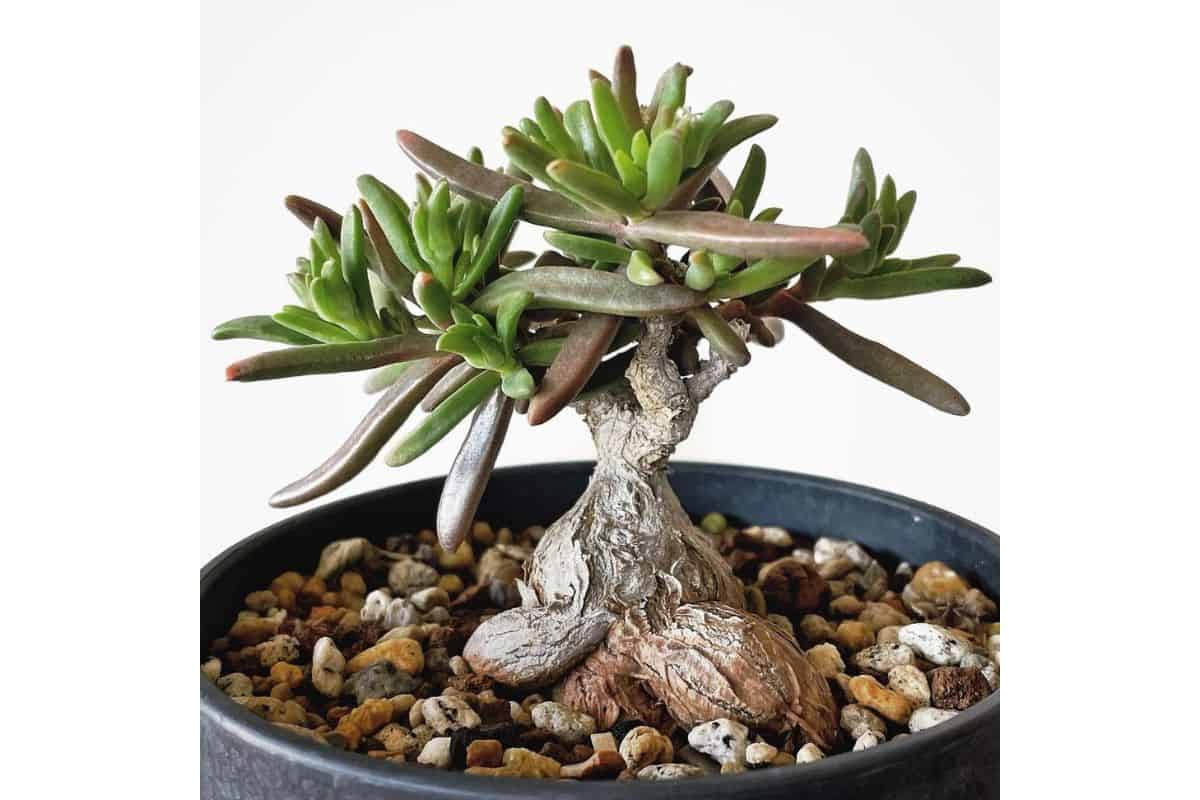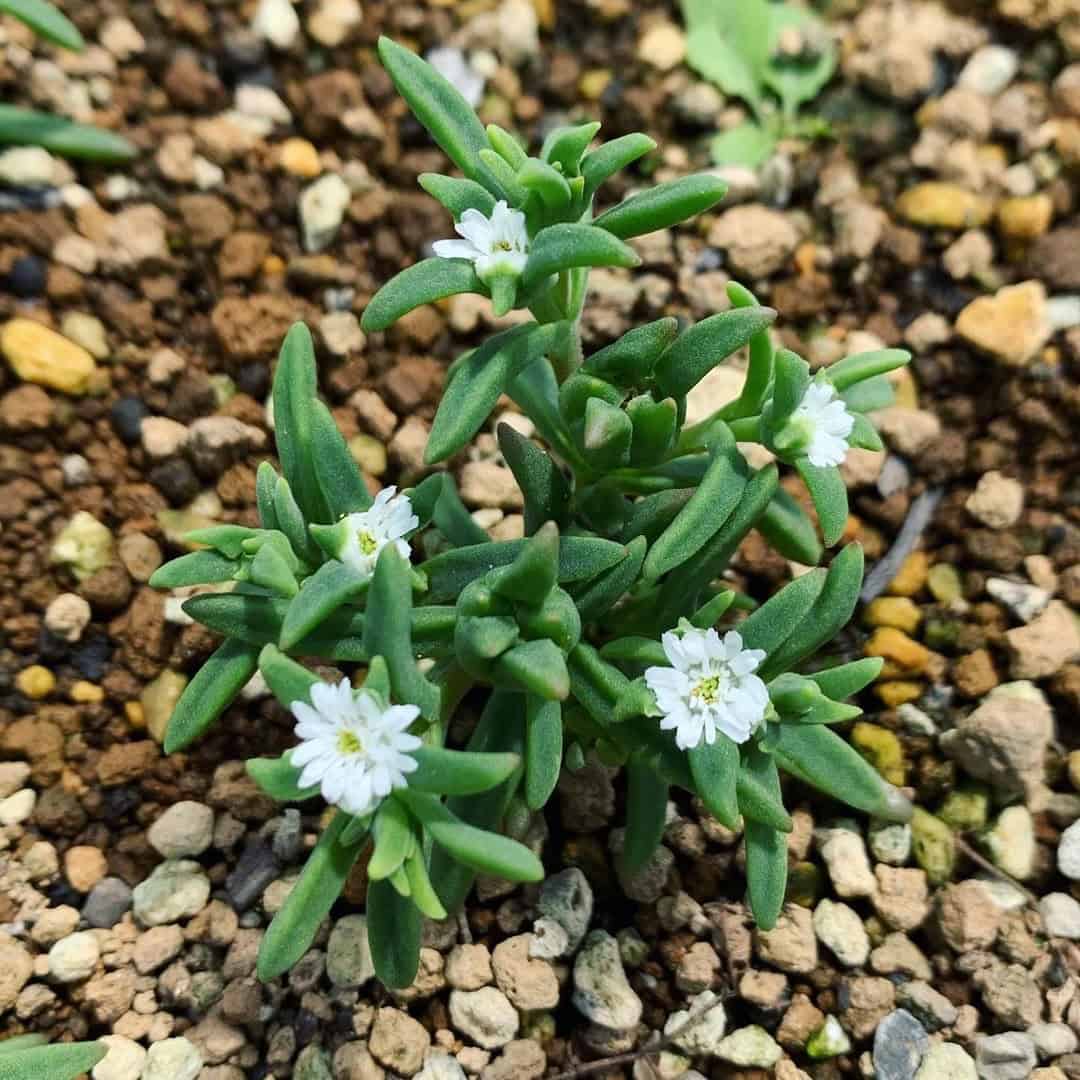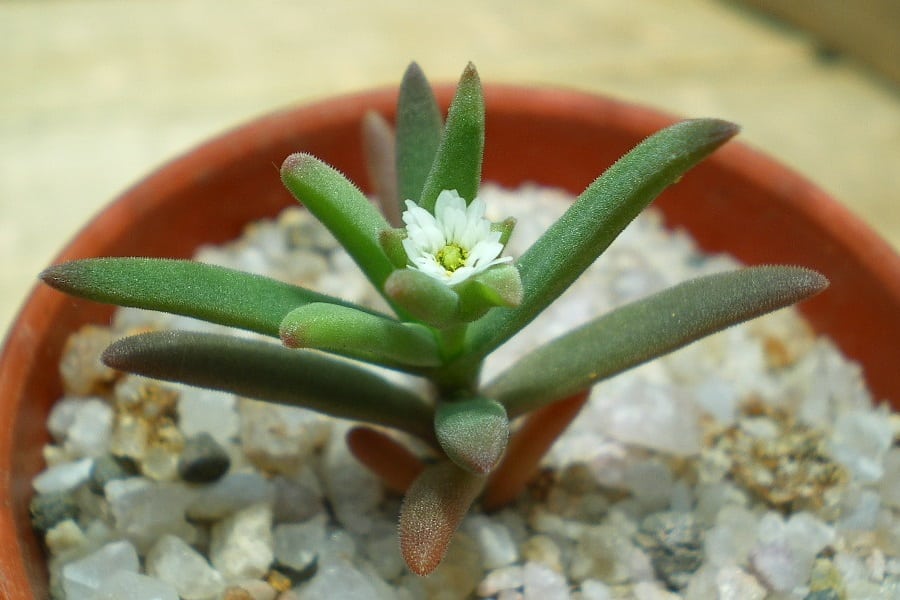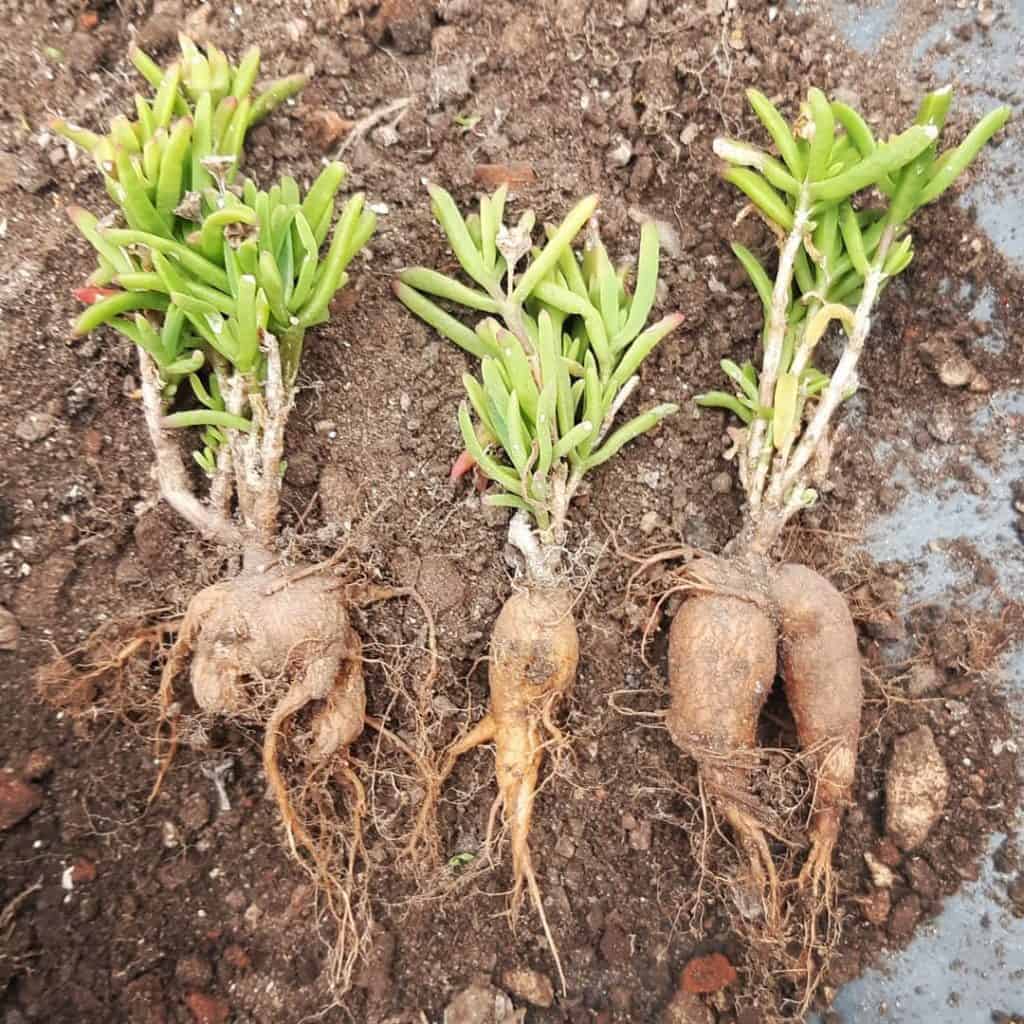Delosperma napiforme: Characteristics and Care
If you’re seeking a petite yet fascinating addition to your garden, look no further than Delosperma napiforme. This dwarf succulent subshrub may be small in stature, but it packs a punch with its unique creeping stems and intriguing white blooms. Unassuming yet captivating, this low-maintenance plant is sure to transform even the smallest spaces into lush, inviting oases. Dive in to discover the secrets behind cultivating this delightful dwarf wonder!

Contents
About Delosperma napiforme
Native to the islands of Réunion and Madagascar, Delosperma napiforme is a true gem in the world of succulents. With its narrow, fleshy leaves that boast a beautiful blend of green and red hues, this plant is an absolute delight for the senses. But the real showstopper? The white flowers that emerge from the tips of the stems, accompanied by tiny, captivating fruits.
Related Post:
1,000 Types of Succulents With Pictures
How to Care for Delosperma napiforme
Light Requirements
Delosperma napiforme thrives in sunny environments, both indoors and out. When planted outdoors, choose a sheltered spot that receives ample sunlight. If you plan to grow it indoors, place the pot near a sunny window or consider using a grow light to ensure it receives the necessary light exposure. Grow lights mimic natural sunlight, allowing your plant to flourish even in low-light conditions.
Watering Needs
This hardy succulent prefers a moderate watering schedule. During the initial establishment period and throughout the summer months, water your Delosperma napiforme once a week. However, be sure to let the soil dry out completely between waterings to prevent root rot. In the winter, reduce watering frequency to prevent excess moisture buildup.

Soil Preferences
To ensure your Delosperma napiforme thrives, choose a well-draining succulent soil mix. Sandy, gravelly, or sandy loam soils are ideal, as they allow excess moisture to escape easily. Avoid heavy, clayey soils, as they can retain too much moisture and lead to root rot. For an added touch of porosity, consider using gravel mulch, medium-textured bark chips, or pine needles.
Fertilizing Tips
Delosperma napiforme has modest fertilizer needs. In the fall, provide a light application of natural or organic succulent fertilizer to support healthy growth. Avoid over-fertilizing during the growing season, as this can make the plant more susceptible to winter damage.
Temperature and Humidity
This resilient succulent is well-adapted to a wide range of temperatures and humidity levels. In the western United States, it can thrive as a perennial in drier climates (USDA Hardiness Zones 6-8). In colder, wetter regions (Zones 4-5), it may perform as an annual. Regardless of your climate, Delosperma napiforme appreciates low humidity levels.

Pests and Problems
While generally hardy and disease-resistant, Delosperma napiforme can occasionally fall victim to pests like mealybugs, vine weevils, and aphids. Regular monitoring and prompt treatment can help keep these pests at bay.
Pruning
Regular pruning encourages healthy growth and maintains the vibrant appearance of your Delosperma napiforme. After the blooms fade in the fall, use sharp pruning shears to remove wilted flowers and trim the plant to a uniform height. This practice prevents seed production and keeps your plant looking its best. Additionally, remove any dead foliage, and if the plant dies back during a particularly harsh winter, trim it to the ground – it will bounce back in the spring!
Potting and Repotting
When you first bring your Delosperma napiforme home, it’s essential to repot it immediately. After that, plan to repot every two years or when the plant outgrows its current container. This ensures ample space for root growth and nutrient uptake.
Delosperma napiforme Propagation Methods

Delosperma napiforme is a low-maintenance dream when it comes to propagation. It readily self-seeds, but you can also propagate it through seeds, cuttings, or division for even more plants to enjoy!
Seeds:
- Rake the soil to expose it and water it moderately.
- Scatter the seeds lightly and press them into the soil.
- Avoid covering the seeds with soil, as they need sunlight to germinate.
Cuttings:
- Take 2-4 inch cuttings and remove the lower leaves, exposing at least one node.
- Allow the cuttings to heal for a week.
- Insert the cut ends into well-draining soil and place in bright sunlight.
- Once new growth appears, transplant the cuttings into their permanent homes.
Division:
- When repotting, gently remove the plant from its container and divide the root system into two or more separate plants.
- Replant each division in a new pot with well-draining potting soil.
